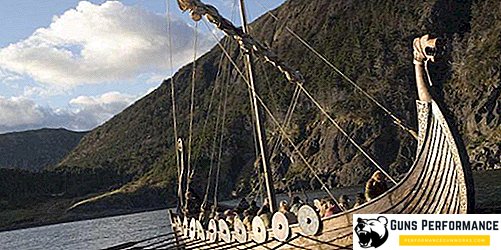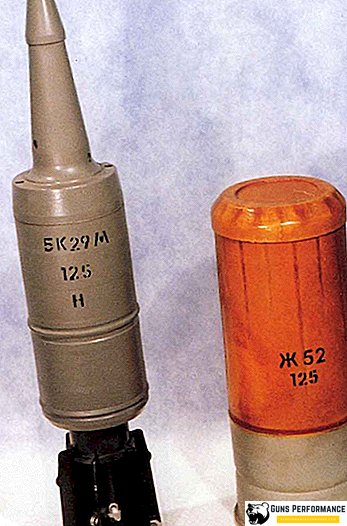The battle for Leningrad and its blockade, which lasted from 1941 to 1944, is the clearest example of courage, inflexibility and unquenchable will to victory of the Soviet people and the Red Army.
Background and position of the city
From the very moment of its foundation, St. Petersburg was located in a very advantageous, but at the same time, dangerous place for a large city. The proximity of the Swedish and then Finnish borders at the beginning only aggravated this danger. However, throughout its history, St. Petersburg (in 1924 it received a new name - Leningrad) was never captured by the enemy.
By the beginning of World War II, all the negative aspects of the location of Leningrad were most clearly visible. The Finnish state, whose border was located only 30–40 kilometers from the city, was definitely opposed to the USSR, which created a real threat to Leningrad. In addition, Leningrad was important for the Soviet state, not only as a social, cultural and economic center, but also as a major naval base. All this in aggregate influenced the decision of the Soviet government to by all means push the Soviet-Finnish border away from the city.
It was the position of Leningrad, as well as the intransigence of the Finns, that led to the war that began on November 30, 1939. In the course of this war, which lasted until March 13, 1940, the border of the Soviet Union was significantly moved to the north. In addition, the strategic position of the USSR in the Baltic was improved by leasing the Finnish peninsula of Hanko, on which Soviet troops were now stationed.
Also, the strategic position of Leningrad was significantly improved in the summer of 1940, when the Baltic countries (Estonia, Latvia and Lithuania) became part of the Soviet Union. Now the nearest border (still Finnish) lay about 140 km from the city.
By the time Germany attacked the Soviet Union, the headquarters of the Leningrad Military District, commanded by Lieutenant-General M. M. Popov, was located in Leningrad. The district consisted of the 7th, 14th, and 23rd armies. Also in the city were based aviation units and formations of the Baltic Fleet.
The beginning of the Great Patriotic War (June-September 1941)
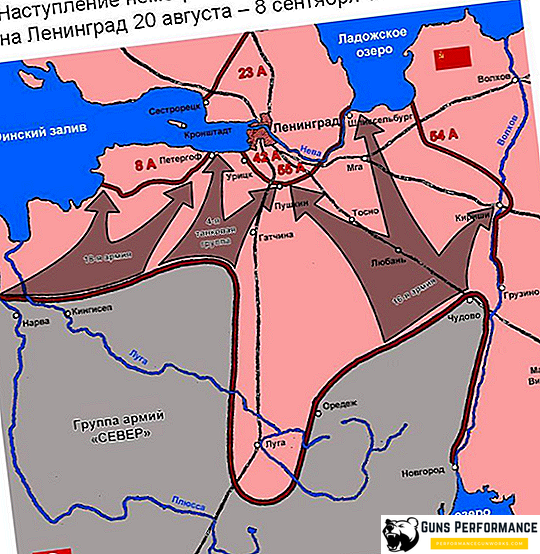
At dawn on June 22, 1941, German troops began hostilities against the Red Army on practically the entire western border of the USSR - from the White to the Black Sea. At the same time, hostilities against the Soviet troops began on the part of Finland, which, although it was in alliance with the Third Reich, was not in a hurry to declare the war to the Soviet Union. Only after a series of provocations and the bombing of Finnish airfields and military facilities by the Soviet air forces did the Finnish government decide to declare war on the USSR.
At the very beginning of the war, the position of Leningrad did not cause any concern to the Soviet leadership. Only the lightning offensive of the Wehrmacht, already on July 9, seized Pskov, forced the Red Army command to begin the installation of fortified lines in the area of the city. It is this time in the national historiography that refers to the beginning of the battle for Leningrad - one of the longest battles of the Second World War.
However, the Soviet leadership not only strengthened the approaches to Leningrad and Leningrad itself. In July-August 1941, Soviet troops conducted a complex of offensive and defensive actions, which contributed to the detention of the enemy’s attack on the city for about a month. The most famous such counter-attack of the Red Army is a strike in the area of the town of Soltsy, where parts of the 56th Wehrmacht’s motorized corps were exhausted. This time was used to prepare Leningrad for defense and to concentrate the necessary reserves in the area of the city and on its approaches.
However, the situation was still tense. In July-August, on the Karelian Isthmus, the Finnish army, which by the end of 1941 managed to capture vast territories, launched an offensive. At the same time, the lands that were ceded to the USSR according to the results of the Soviet-Finnish war of 1939-1940 were seized by the Finns in just 2-3 months. From the north, the enemy approached Leningrad and stood at a distance of 40 km from the city. In the south, the Germans managed to break through the Soviet defenses, and already in August they captured Novgorod and Krasnogvardeisky (Gatchina) and by the end of the month they reached the outskirts of Leningrad.
The beginning of the siege of Leningrad (September 1941 - January 1942)
On September 8, German troops reached Lake Ladoga, occupying Shlisselburg. Thus, the land communication of Leningrad with the rest of the country was interrupted. The blockade of the city began, which lasted 872 days.
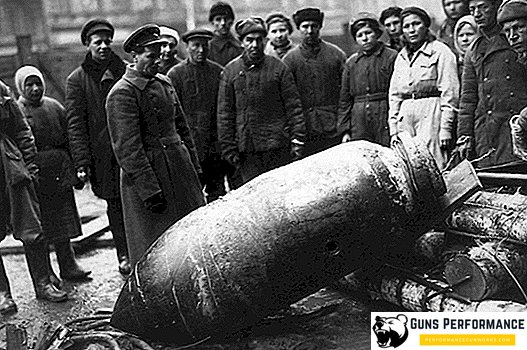
After the blockade was established, the command of the German Army Group North made a massive assault on the city, hoping to break the resistance of its defenders and release the forces that were urgently needed in other sectors of the front, primarily for Army Group Center. However, the heroic defense of the Red Army units defending Leningrad allowed the Wehrmacht to achieve very modest successes. German troops took the city of Pushkin and Krasnoye Selo. Another success of the Wehrmacht was the dissection of the Soviet defense in the area of Peterhof, which is why the Oranienbaum bridgehead was formed, cut off from the Leningrad group of Soviet troops.
In the very first days of the blockade for the Soviet leadership in Leningrad, the problem of organizing the supply of the population of the city and the troops became acute. Stocks in Leningrad remained only for a month, which forced us to actively look for a way out of the situation. At first, the city was supplied with aviation equipment, as well as at the expense of the sea route through Ladoga. Nevertheless, by October, the food situation in Leningrad became disastrous at first, and then critical.
Desperate to take the northern capital of the USSR, the command of the Wehrmacht proceeded to methodical shelling and aerial bombardments of the city. Civilians suffered more from these bombardments, which only increased the hostility of the citizens of Leningrad to the enemy. In addition, at the end of October-November, a famine began in Leningrad, which claimed 2-4 thousand lives each day. Before freezing on Ladoga, the supply of the city could not satisfy even the minimum needs of the population. The rates of rations issued on ration cards systematically decreased, becoming the minimum in December.

However, at the same time, the troops of the Leningrad Front successfully distracted the fairly large Wehrmacht grouping, not allowing it to come to the aid of the German troops in other sectors of the Soviet-German front at critical times for the country.
Already in the first half of September 1941 (data from various sources vary from September 8 to September 13), Army General G. K. Zhukov was appointed commander of the Leningrad Front. His appointment coincided chronologically with the fierce storming of the city by the Germans. At this critical time, a real threat looms over the city, if not its surrender, then the loss of its part, which was also unacceptable. Zhukov’s energetic measures (mobilization to the ground units of the Baltic Fleet’s seafarers, operational transfer of parts to the threatened sectors) were one of the decisive factors that influenced the outcome of this assault. Thus, the most severe and violent attack of Leningrad was repelled.
Having no time to take a breather, the Soviet leadership began planning for the de-blockade of the city. In the autumn of 1941, two operations were carried out for this purpose, which, alas, had very modest results. The Soviet troops managed to seize a small bridgehead on the opposite bank of the Neva in the Nevsky Dubrovka area (this bridgehead is now known as the “Nevsky Piglet”), which the Germans managed to eliminate only in 1942. However, the main goal - the elimination of the Shlisselburg salient and the breaking of the blockade of Leningrad - was not achieved.
At the same time, when the Wehrmacht launched a decisive attack on Moscow, Army Group North began a limited attack on Tikhvin and Volkhov in order to reach the Svir River, on which Finnish troops were stationed. This meeting to the east of Leningrad threatened the city with utter catastrophe, since in this way the maritime connection with the city would be completely broken.
By November 8, 1941, the Wehrmacht managed to seize Tikhvin and Volkhov, which created additional difficulties for the supply of Leningrad, since the railway leading to the coast of Lake Ladoga was cut. However, at the same time, the troops of the Soviet North-Western Front managed to create a solid defense, which the Germans failed to break through. Vermaht was stopped less than a hundred kilometers from the Finnish troops. The Soviet command, properly assessing the state of the enemy and the capabilities of its troops, decided to launch a counterattack in the Tikhvin area practically without an operational pause. This offensive began on November 10, and Tikhvin was released on December 9.
Winter 1941-1942 for many thousands of Leningrad became fatal. The deterioration of the food situation reached its peak in December 1941, when the daily food allowances for children and dependents dropped to just 125 grams of bread per day. Such a rule has identified many starvation deaths.
Another factor that led to a large mortality rate in Leningrad in the first blockade winter was cold. Winter 1941-1942 was abnormally cold, while central heating in Leningrad virtually ceased to exist. However, the cold winter was also a salvation for Leningraders. Frozen Lake Ladoga has become a convenient road to supply the besieged city on the ice. This road, along which the cars with foodstuffs went up to April 1942, was called the “Road of Life”.
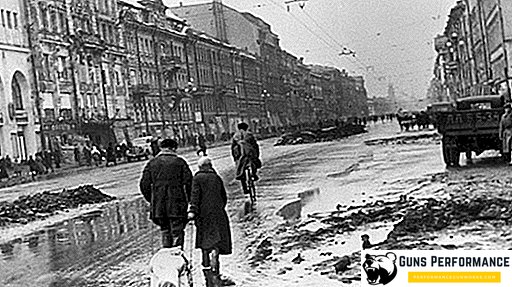
At the end of December 1941, the first increase in the nutritional standard of the inhabitants of besieged Leningrad followed, which made it possible to significantly reduce the death rate from starvation and disease. During the winter of 1941/1942. There have been several increases in the standards for the issuance of food. Leningrad was saved from starvation.
However, the military situation even after the liberation of Tikhvin and the restoration of the land connection between Moscow and the coast of Lake Ladoga remained difficult. The command of Army Group North understood that it would not succeed in carrying out the offensive in the winter and spring of 1942, and defended positions for a long defense. The Soviet leadership did not have enough forces and means for a successful offensive in the winter of 1941/1942, so the Wehrmacht managed to win the right time. By the spring of 1942, the German positions in the Shlisselburg region were a well-fortified bridgehead.
The siege of Leningrad continues (1942)
In January 1942, the Soviet command attempted to break through the German defenses in the Leningrad region and unlock the city. The main force of the Soviet troops here was the 2nd Shock Army, which in January-February managed to break through the German defenses south of Leningrad and significantly advance into the territory occupied by the Wehrmacht. Together with the advancement of the army to the rear of the Hitler troops, the danger of its environment increased, which was not appreciated in time by the Soviet leadership. As a result, in the spring of 1942 the army was surrounded. After heavy fighting, only about 15 thousand people managed to leave the encirclement. Most of the soldiers and officers were killed, part along with the commander of the army A. A. Vlasov was captured.
At the same time, the German leadership, realizing that Leningrad could not be taken, during the spring-summer of 1942, attempted to destroy the ships of the Soviet Baltic Fleet with the help of air strikes and artillery attacks. However, here too the Germans failed to achieve any meaningful results. The death of civilians only increased the hatred of Leningrad to the Wehrmacht.
In 1942, the situation in the city returned to normal. In the spring, large-scale subbotniks were held in order to remove people who died during the winter and bring the city in order. At the same time, many Leningrad enterprises and a tram network were launched, becoming a symbol of the life of the city in the grip of a blockade. The restoration of the economy of the city took place in conditions of intense shelling, but people seemed to be used even to this.
To counteract the artillery fire of the Germans, in 1942 a set of measures was taken in Leningrad to strengthen positions, as well as counter-battery wrestling. As a result, already in 1943, the intensity of the shelling of the city decreased by 7 times.
And even in 1942, the main events of the Soviet-German front unfolded in the south-western and western directions, Leningrad played an important role in them. As before diverting the large German forces, the city became a major springboard in the enemy's rear.
A very significant event of the second half of 1942 for the city of Leningrad was the attempt of the Germans to capture the landing of the island Sukho in Lake Ladoga and thus create serious problems for the supply of the city. October 22 began the German landing. Violent battles immediately broke out on the island, often turning into hand-to-hand combat. However, the Soviet garrison of the island, showing courage and resilience, managed to repel the enemy troops.
Breakthrough of the Siege of Leningrad (1943)
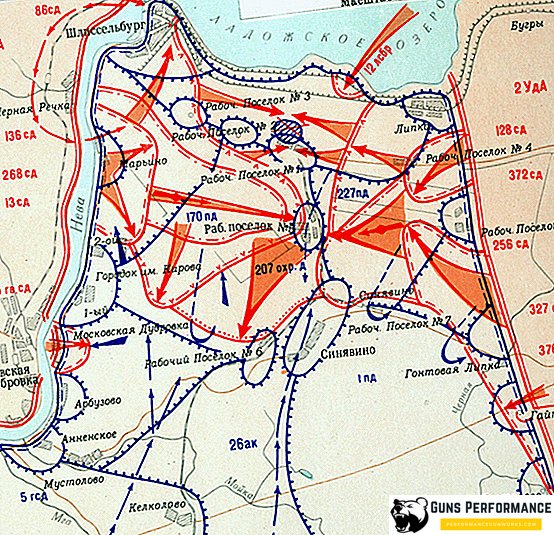
Winter 1942/1943 seriously changed the strategic situation in favor of the Red Army. Soviet troops were offensive in all directions, and the north-west was no exception. However, the main event in the northeast of the Soviet-German front was the operation Iskra, the purpose of which was to break through the blockade of Leningrad.
This operation began on January 12, 1943, and two days later only two kilometers remained between the two fronts - Leningradsky and Volkhovsky. However, the command of the Wehrmacht, realizing the criticality of the moment, hastily threw new reserves into the Shlisselburg area in order to stop the Soviet offensive. These reserves seriously slowed the advance of the Soviet troops, but already on January 18 they joined, breaking the ring of the city blockade. Nevertheless, despite this success, the further offensive of the Volkhov and Leningrad fronts ended in nothing. The front line has stabilized for another year.
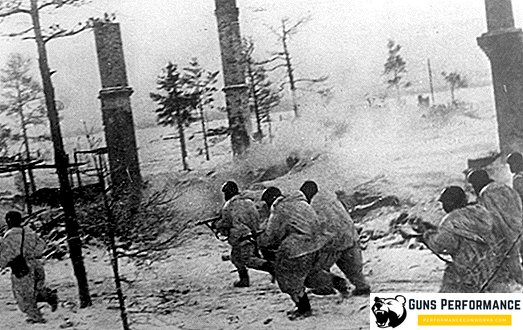
In just 17 days after the blockade was broken, the railroad and highway, which received the symbolic name “Victory Roads”, was launched along the corridor punched in Leningrad. After that, the food supply of the city improved further, and the death rate from hunger almost disappeared.
During 1943, the intensity of the German shelling of Leningrad was significantly reduced. The reason for this was the effective counter-battery struggle of the Soviet troops in the area of the city and the difficult situation of the Wehrmacht in other sectors of the front. By the end of 1943, this severity began to affect the northern section.
Lifting the Siege of Leningrad (1944)
At the beginning of 1944, the Red Army firmly held a strategic initiative. German army groups "Center" and "South" suffered heavy losses as a result of the battles of previous summer-winter and were forced to go over to strategic defense. Of all the German army groups located on the Soviet-German front, only Army Group "North" managed to avoid heavy losses and defeats, largely due to the fact that there was practically no active operations here since the end of 1941.
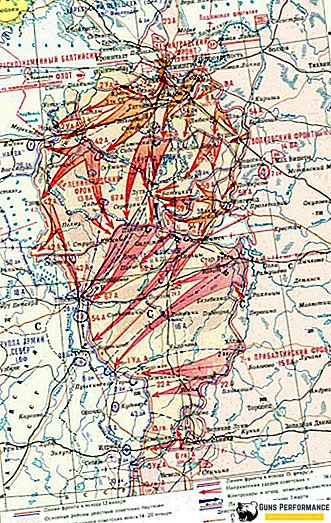
On January 14, 1944, the troops of the Leningrad, Volkhov, and 2nd Baltic fronts launched the Leningrad-Novgorod operation, during which they managed to crush the large Wehrmacht forces and liberate Novgorod, Luga and Krasnogvardeisk (Gatchina). As a result, the German troops were driven back hundreds of kilometers from Leningrad and suffered huge losses. Thus, there was a complete lifting of the blockade of Leningrad, which lasted 872 days.
In June-July 1944, during the Vyborg operation, Soviet troops pushed the Finnish troops from Leningrad to the north, thanks to which the threat to the city was practically eliminated.
Results and value of the blockade of Leningrad
As a result of the blockade of Leningrad, the population of the city suffered significant losses. From hunger for the entire period 1941-1944. about 620 thousand people died. During the same period, about 17 thousand people died from barbaric German shelling. The bulk of the losses occur in the winter of 1941/1942. The military casualties of the battle for Leningrad are approximately 330 thousand killed and 110 thousand missing.
The Siege of Leningrad has become one of the outstanding examples of the resilience and courage of ordinary Soviet people and soldiers. For almost 900 days, almost completely surrounded by enemy forces, the city not only fought, but also lived, functioned normally and made its contribution to the Victory.
The significance of the battle for Leningrad is very difficult to overestimate. The stubborn defense forces of the Leningrad Front in 1941 managed to forge a large and powerful German grouping, eliminating its transfer to the Moscow area. Также в 1942 году, когда немецким войскам под Сталинградом требовались срочные подкрепления, войска Ленинградского и Волховского фронтов активными действиями не позволяли группе армий "Север" перебрасывать дивизии на южное направление. Разгром же в 1943-1944 гг. этой группы армий поставил вермахт в исключительно сложное положение.
В память о величайших заслугах граждан Ленинграда и воинов, его оборонявших, 8 мая 1965 года Ленинграду было присвоено звание города-героя.



